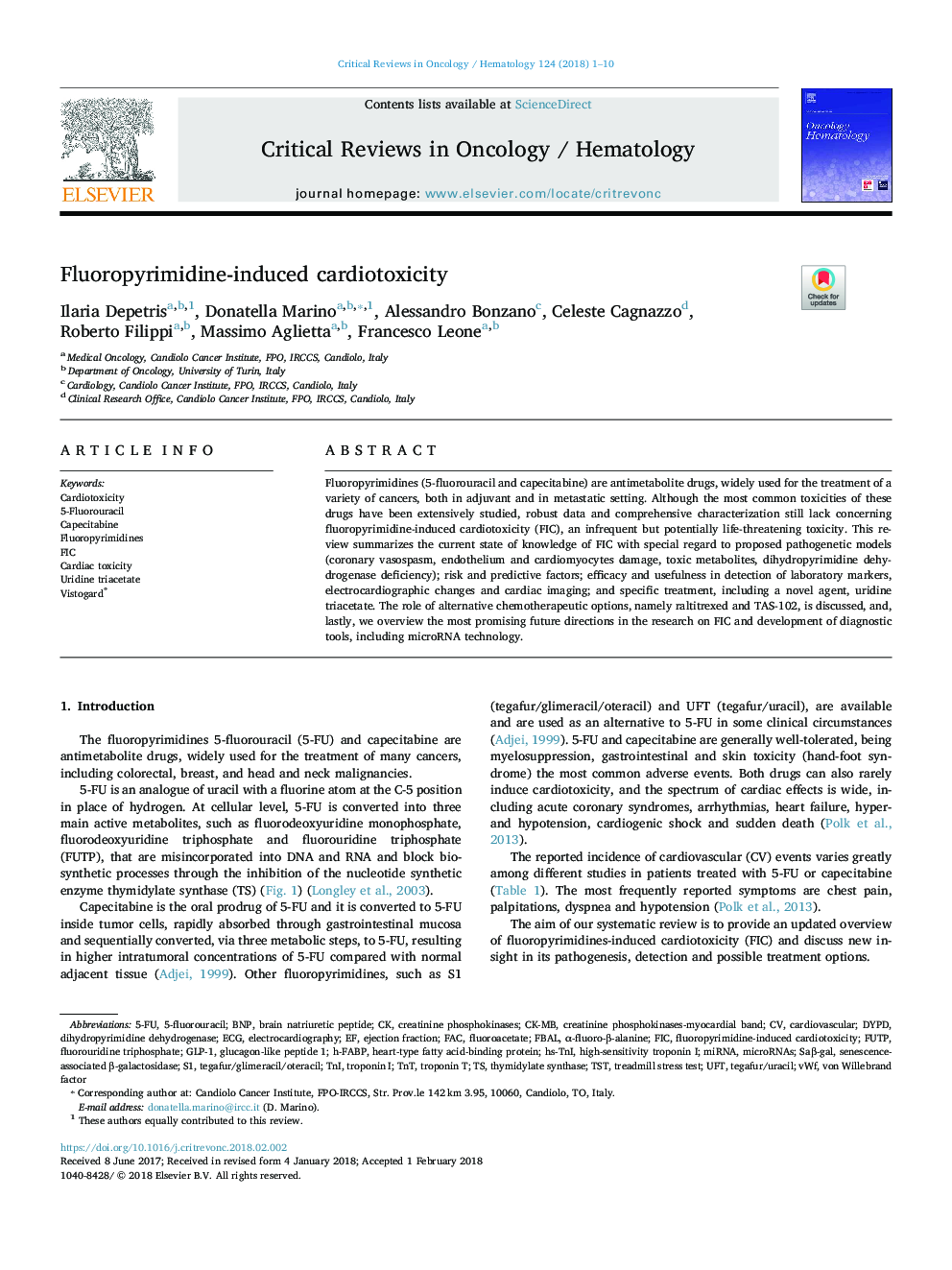| Article ID | Journal | Published Year | Pages | File Type |
|---|---|---|---|---|
| 8733662 | Critical Reviews in Oncology/Hematology | 2018 | 10 Pages |
Abstract
Fluoropyrimidines (5-fluorouracil and capecitabine) are antimetabolite drugs, widely used for the treatment of a variety of cancers, both in adjuvant and in metastatic setting. Although the most common toxicities of these drugs have been extensively studied, robust data and comprehensive characterization still lack concerning fluoropyrimidine-induced cardiotoxicity (FIC), an infrequent but potentially life-threatening toxicity. This review summarizes the current state of knowledge of FIC with special regard to proposed pathogenetic models (coronary vasospasm, endothelium and cardiomyocytes damage, toxic metabolites, dihydropyrimidine dehydrogenase deficiency); risk and predictive factors; efficacy and usefulness in detection of laboratory markers, electrocardiographic changes and cardiac imaging; and specific treatment, including a novel agent, uridine triacetate. The role of alternative chemotherapeutic options, namely raltitrexed and TAS-102, is discussed, and, lastly, we overview the most promising future directions in the research on FIC and development of diagnostic tools, including microRNA technology.
Keywords
TSTCK-MBTreadmill stress testH-FABPUFThigh-sensitivity troponin IBNPFluorouridine triphosphateGLP-1FBALFICvWFFACα-Fluoro-β-alanine5-FUTnIsenescence-associated β-galactosidaseElectrocardiographyECGTroponin ITroponin TTnTdihydropyrimidine dehydrogenasemicroRNAsthymidylate synthaseCardiac toxicityCardiotoxicityVon Willebrand factorFUTPFluoroacetate5-fluorouracilFluoropyrimidinescardiovascularMiRNAheart-type fatty acid-binding proteinglucagon-like peptide 1brain natriuretic peptideejection fractionCapecitabine
Related Topics
Health Sciences
Medicine and Dentistry
Hematology
Authors
Ilaria Depetris, Donatella Marino, Alessandro Bonzano, Celeste Cagnazzo, Roberto Filippi, Massimo Aglietta, Francesco Leone,
